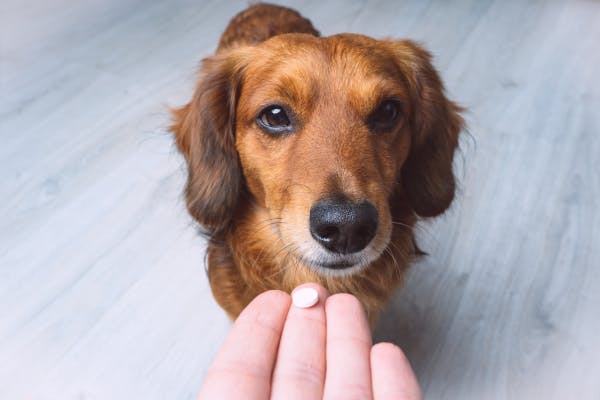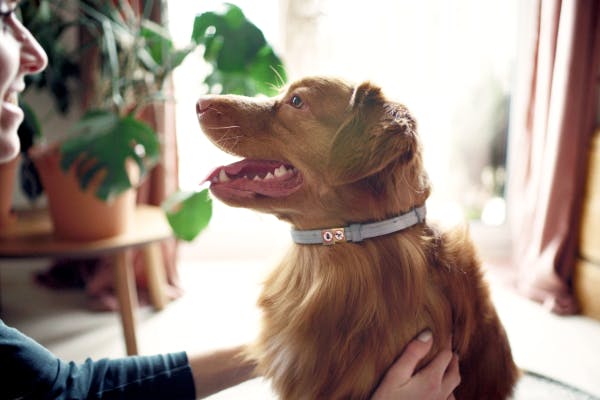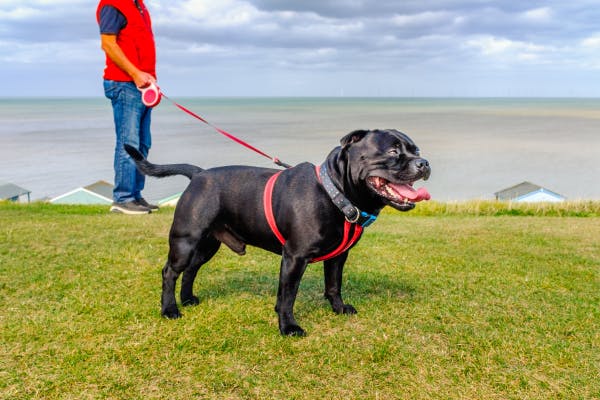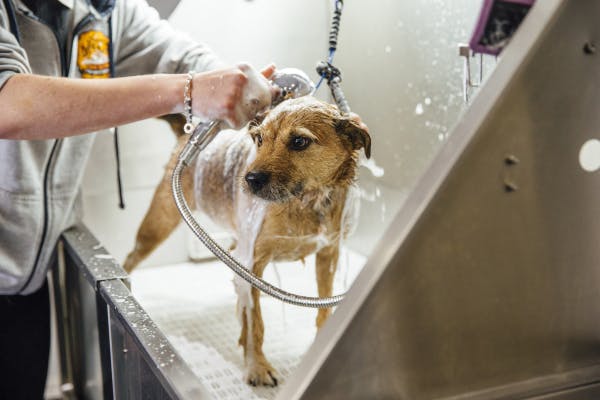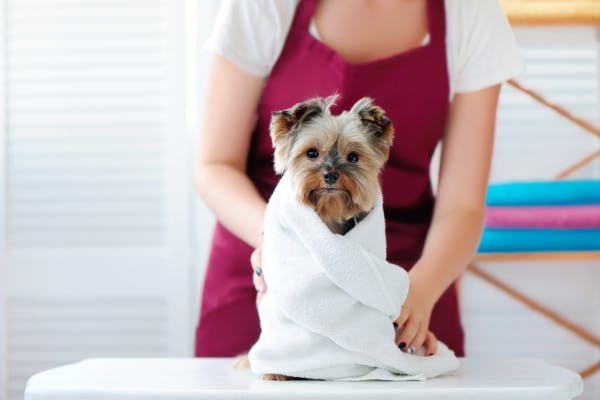Beds in U.S.A
Best Dog Beds
Find the best dog beds by measuring your pet accurately, selecting durable and supportive materials like memory foam or egg crate foam, and opting for machine-washable options for easy maintenance. Prioritize comfort, support, and hygiene to provide your dog with a cozy sleeping space.
Why You Should Trust Us
Handpicked beds. Our expert researchers, data analysts, and editors have put more than 45 hours of effort into researching the best available dog beds in the United States. We had researched 618 beds sold in 5 countries before handpicking the 24 best dog beds.
- Hours Researched
- 45+
- Products Researched
- 618
- Products Handpicked
- 24
- Acceptance Rate
- 3.9%
How to choose The Best bed:
Choosing the perfect bed for your dog is an important task. The bed should be comfortable, durable, and easy to clean. When looking for a dog bed, prioritize features that will provide the best support and comfort for your pet. This will ensure that they have a cozy place to rest and relax.
One essential feature of a good dog bed is the cushioning material used. High-quality materials like memory foam or orthopedic foam are popular choices because they offer excellent support for your pet's joints and muscles. This is especially important for older dogs or those with joint or muscle issues. Another important factor to consider is durability. A well-made dog bed should be able to withstand daily wear and tear from your pet's movement, scratching, and chewing. This ensures that the bed will last longer and continue to provide comfort for your dog.
Ease of cleaning is crucial when selecting a dog bed. Look for beds with removable and washable covers to maintain hygiene and keep odors at bay. A clean and fresh-smelling bed not only benefits your pet but also contributes to a pleasant home environment. By focusing on these essential features – comfort, durability, and ease of cleaning – you can find the perfect dog bed that will keep your beloved pet happy and healthy while also creating a comfortable living space for both of you.
3 types of dog beds:
common questions about beds:
Elevated Beds
- our rating95 out of 100
- our rating95 out of 100
- our rating91 out of 100
Elevated dog beds are great for dogs with joint problems because they provide support and comfort. These beds give firm, even support to the pet's whole body, which helps take pressure off joints. This is very helpful for dogs that have joint issues like arthritis and hip dysplasia.
The orthopedic support from elevated beds can make a big difference in a dog's comfort when resting or sleeping. By taking away strain on their joints, these beds can help make a dog's life better and maybe even slow down joint problems.
Learn About Elevated Beds
Orthopedic Beds
- our rating95 out of 100
- our rating95 out of 100
- our rating93 out of 100
Orthopedic dog beds provide support and comfort for dogs, especially those with joint issues or arthritis. When choosing an orthopedic dog bed, consider these important features:
Type of foam: Memory foam is a popular choice because it conforms to the dog's body shape and provides even weight distribution. Other options include high-density foam or air-filled beds, which offer different levels of support and comfort.
Size: Measure your dog in a reclining position with both front and back legs extended. Add five inches for small dogs and ten inches for large dogs to ensure enough room for your dog to stretch out or curl up comfortably.
Weight support: Make sure the orthopedic bed can support your dog's weight by checking the manufacturer's recommendations. This will provide the necessary level of support for their joints and overall comfort.
Heating or cooling elements: Some beds come with built-in heating pads or cooling gel layers to provide extra warmth or cooling relief for dogs with joint pain or those living in extreme climates.
Removable and washable cover: A removable and washable cover makes it easy to maintain cleanliness and prolong the life of the bed.
Water and chew resistance: For dogs prone to chewing or accidents, look for beds made from durable materials like ballistic nylon, canvas, or Cordura, and those with waterproof or water-resistant liners.
Warranty or money-back guarantee: Many beds come with warranties or money-back guarantees, offering protection against defects in materials, workmanship, and foam flattening.
Large Dog Beds
- our rating93 out of 100
- our rating93 out of 100
- our rating92 out of 100
To pick the right dog bed for your large dog, think about these factors:
Size and shape: Measure your dog's length and height to find a bed with enough room for them to stretch out and relax. Watch how they sleep to decide on the best bed style, like rectangular, oval, or nesting/bolster beds.
Material and durability: Choose high-quality materials that can handle regular use. Hypoallergenic beds are great for dogs with allergies or sensitive skin. Pick a material that is easy to clean.
Support and comfort: Find beds with good support, especially for older dogs or those with orthopedic issues. Memory foam beds are a top choice because they shape to your pet's body, easing joint pressure and providing pain relief.
Machine-washable covers: Pick dog beds with removable covers that can be easily cleaned in the washing machine. This helps keep the bed clean and makes it last longer.
Certifications: Look for beds with Certipur-US-certified memory foam. This means the bed has good support, comfort, and safety.
By looking at these important features, you can give your dog a comfortable, supportive bed that meets their needs.
Learn About Large Dog Beds
Questions About Beds
How to Measure Your Dog for the Right-Sized Bed?
To find the perfect bed for your dog, follow these steps:
Measure your dog: Use a tape measure to measure your dog from their nose to the base of their tail. This gives you the minimum length of the dog bed. Then, measure your dog from shoulder to shoulder at the widest point. The bed should be at least this wide. Add 6 to 12 inches to the final number to give your dog some room to spread out.
Size up: If unsure, choose a larger dog bed. Dog owners often underestimate how much space their pet needs for comfort.
Check manufacturer's guidelines: After getting your dog's measurements, check the guidelines provided by the dog bed manufacturer. Focus on body length and weight recommendations to ensure you're choosing the right size.
Visualize your dog on a new bed: To be sure about your choice, make a cardboard model of the bed based on its dimensions and have your dog lie on it. This step will give you extra assurance that the chosen bed is a good fit for your pet.
What are the benefits of machine-washable dog bed?
Machine-washable dog beds are practical and helpful for both pet owners and their dog. These beds offer many advantages, including easy cleaning and improved home hygiene.
One of the main benefits of a washable dog bed is convenience. With a removable cover that can be machine-washed, it eliminates the need for time-consuming, hands-on cleaning. This means pet owners can spend more time enjoying their pets rather than dealing with the stress of maintaining their beds.
Washable dog beds also contribute to better home hygiene. Regular washing of the bed cover helps reduce dirt, pet hair, and other allergens. This creates a cleaner living environment for pets and their human family members.
Washable dog beds come in various types to cater to different dogs' needs. Some options include orthopedic beds for dogs with joint issues, elevated beds for those who prefer to sleep off the ground, and heated beds for dogs who need extra warmth.
When choosing a dog bed, consider factors like size, comfort, and support. A washable bed has added benefits in terms of cleanliness and maintenance, but it's crucial to ensure it meets your pet's specific needs as well.
To keep a dog bed clean between washes, pet owners can take extra measures like vacuuming regularly to remove loose fur and debris or using a lint roller to pick up hair from the bed's surface. These practices will enhance the bed's longevity and contribute to a cleaner living environment for both pets and their owners.
What materials make a good durable and supportive dog bed?
When looking for a durable and supportive dog bed, consider the materials used in its construction. Orthopedic dog beds are designed to provide extra support and comfort for dogs with joint pain, arthritis, or other musculoskeletal issues. Common materials in orthopedic dog beds are memory foam and egg crate foam.
Memory foam is popular because it contours the dog's body, providing personalized support and pressure relief. It keeps its shape over time, ensuring long-lasting support, making it great for dogs with arthritis. High-density memory foam of at least 4 pounds per cubic foot offers maximum durability.
Egg crate foam is another good choice as it offers similar support while being more affordable than memory foam. However, it may not be as durable and needs to be replaced more often than memory foam.
Other materials used in orthopedic dog beds include cooling gel foam, latex foam, and polyfill.
Cooling gel foam is ideal for dogs in warmer climates, as it helps regulate temperature and prevent overheating.
Latex foam is more eco-friendly, while polyfill is a good choice for those on a budget.
Some orthopedic dog beds have antimicrobial or odor-resistant materials, like memory foam infused with bamboo charcoal. These properties can help absorb odors and prevent the growth of bacteria. However, regular cleaning is still necessary to maintain the bed's freshness.
When choosing an orthopedic dog bed material, consider your dog's specific needs and preferences, including any allergies or sensitivities they may have. Choose hypoallergenic materials if your dog has a history of allergies. Also, prioritize non-toxic materials certified by organizations like CertiPUR-US or OEKO-TEX to ensure your dog's health and safety.











